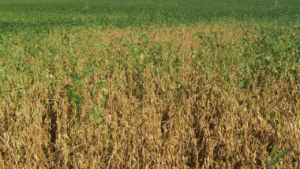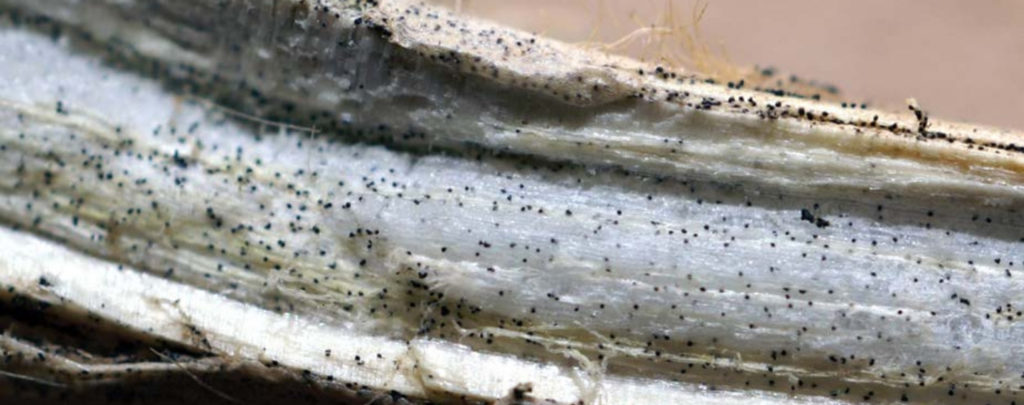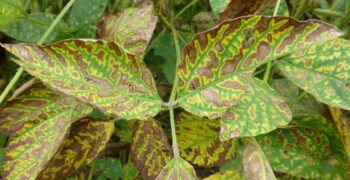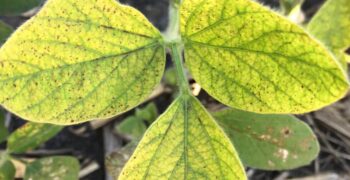Background:
Charcoal Rot is caused by the fungus Macrophomina phaseolina, the same fungus that causes charcoal rot in other crops such as corn, grain sorghum and sunflowers. The fungus thrives in hot and dry weather conditions. Microsclerotia survives within the soil and on crop residue and can infect crops year after year. There are times where charcoal rot will not show any symptoms under irrigation and still cause yield loss. When both soybean cyst nematode and charcoal rot are present, charcoal rot has shown to increase severity and yield loss.
 Scouting:
Scouting:
Symptoms will show up during reproductive stages primarily in mid July-early October. If a field has a history of charcoal rot, or soybean cyst nematode, these should be looked at first. Prime locations for the fungus to thrive in are, sandy-lighter soils, compacted soils, terrace tops, hillsides and along field edges. Plants will become infected throughout the growing season and may not show any symptoms until mid to late season. Plants can start to lose vigor, start wilting and turning yellow, leading to premature death. To tell if a plant is infected the lowest and woody part of the stem will turn a silver to greyish color. Small specks of microsclerotia can be seen when the stem is split, on the lower end of the plant and look similar to specks of pepper.
Management:
- Crop rotation to a non host crop to a small grain such as wheat or barley.
- Partial resistance does exist, southern varieties (group 4+) and in some early varieties, but is very limited.
- No-tilling or minimal till soybeans can help conserve moisture within the soil and reduce charcoal rot severity.
- Management of SCN populations will help reduce charcoal rot infection.
- Lower plant populations to reduce plant stress.



